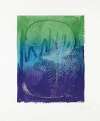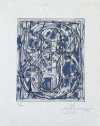Tales
Of Genji
Helen Frankenthaler's Tales Of Genji series, inspired by the classic Japanese literary work, consists of six woodcuts: Tales Of Genji I through to Tales Of Genji VI. Created in 1998, this series reflects Frankenthaler's innovative approach to woodcut printing, infusing the medium with the fluidity of watercolour, thereby reconsidering the parameters of printmaking.
Helen Frankenthaler Tales Of Genji For sale
Tales Of Genji Value (5 Years)
Works from the Tales Of Genji series by Helen Frankenthaler have a strong market value presence, with 31 auction appearances. Top performing works have achieved standout auction results, with peak hammer prices of £181463. Over the past 12 months, average values across the series have ranged from £18492 to £41524. The series shows an average annual growth rate of 5.45%.
Tales Of Genji Market value
Auction Results
| Artwork | Auction Date | Auction House | Return to Seller | Hammer Price | Buyer Paid |
|---|---|---|---|---|---|
 Tales Of Genji V Helen Frankenthaler Signed Print | 16 Apr 2025 | Christie's New York | £34,000 | £40,000 | £50,000 |
 Tales Of Genji II Helen Frankenthaler Signed Print | 25 Oct 2024 | Christie's New York | £14,450 | £17,000 | £23,000 |
 Tales Of Genji III Helen Frankenthaler Signed Print | 28 Oct 2022 | Sotheby's New York | £136,000 | £160,000 | £220,000 |
 Tales Of Genji IV Helen Frankenthaler Signed Print | 28 Sept 2021 | Bonhams Los Angeles | £38,250 | £45,000 | £60,000 |
 Tales Of Genji VI Helen Frankenthaler Signed Print | 10 Mar 2021 | Christie's New York | £16,150 | £19,000 | £25,000 |
 Tales Of Genji I Helen Frankenthaler Signed Print | 26 Sept 2019 | Leslie Hindman Auctioneers, Chicago | £29,750 | £35,000 | £45,000 |
Sell Your Art
with Us
with Us
Join Our Network of Collectors. Buy, Sell and Track Demand
Meaning & Analysis
Helen Frankenthaler, a pioneering figure in Post-War American art, is renowned for her profound influence on the development of abstract expressionism and her role in the inception of the Colour-Field movement. Her Tales Of Genji series, produced in 1998, is a testament to her ongoing exploration of colour, form, and the capacity of different mediums to convey emotional depth and narrative complexity. Inspired by the eleventh-century Japanese novel The Tale of Genji, Frankenthaler translates the intricate tapestry of court life, romantic intrigue, and the aesthetic sensibilities of Heian Japan into a series of abstract compositions that challenge and expand the traditional boundaries of woodcut printing.
Each print within the series, Tales Of Genji I through to Tales Of Genji VI, is characterised by Frankenthaler's signature style of soak-stain painting, adapted here to the medium of woodcut to emulate a watercolour effect. This method involved layering colours and employing a variety of cutting techniques to create prints that resonate with the spontaneity and vibrancy of her larger body of work. The series not only showcases Frankenthaler's mastery of colour and form but also her ability to engage with and reinterpret literary themes through visual abstraction.
The Tales Of Genji series represents a dialogue between Western abstract art and Eastern literary tradition, highlighting Frankenthaler's interest in the cross-cultural exchange of ideas and aesthetic principles. Through her abstract interpretations of Genji's tales, Frankenthaler invites viewers to experience the emotional nuances and thematic richness of the source material, underscoring the universal aspects of human experience that transcend cultural and temporal boundaries.












